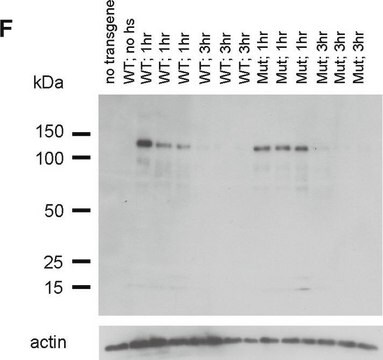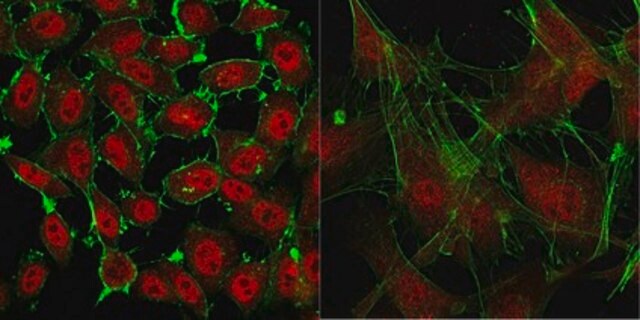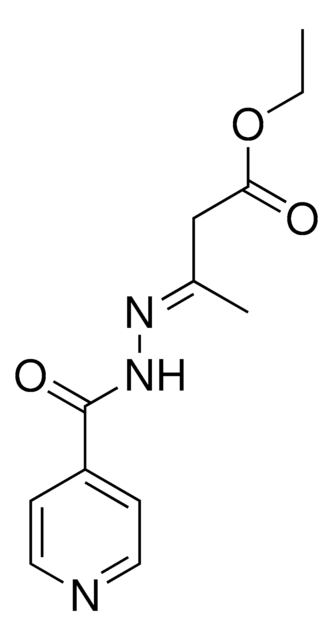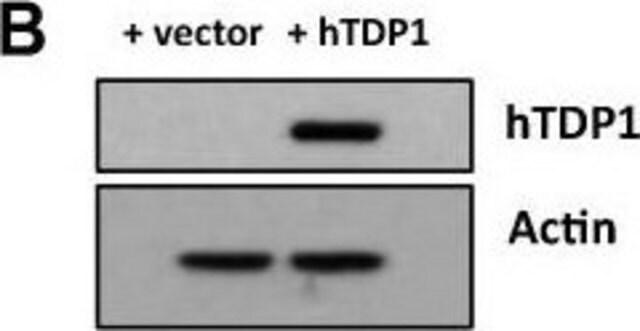General description
Actins are ubiquitous eukaryotic proteins that serve as a multi-functional, basic building blocks of cytoskeletal microfilaments. They play critical roles in a wide range of cellular processes, including cell division, cell migration, chromatin remodeling, trascriptional regulation and vesicle trafficking. These funstions are attributed to their ability to form filaments, which can quickly assemble and disassemble depending upon the needs of the cell. At least six different actin types have been reported in mammals. Although actins show about 90% overall sequence homology, isoforms do not show spatial, temporal and tissue-specific expression patterns and only 50-60% homology is found in their 18 N-terminal residues. Beta and gamma-actins, also known as cytoplasmic actins, are highly conserved in higher animals and are predominantly expressed in non-muscle cells where they control cell structure. Exocytosis, and motility. They are nearly identical proteins and differ only in four amino acids at the N-terminal region. The other four actin isoforms are typically found in specific adult muscle tissue types. Alpha-cardiac and alpha-skeletal actins are expressed in striated cardiac and skeletal muscles, respectively. Alpha and gamma actins are primarily found in vascular smooth muscle and enteric smooth muscles, respectively. It has been shown that under calcium-bound conditions, beta-actin exhibits more dynamic behavior than gamma-actin with higher rates of polymerization and depolymerization. Also, beta- and gamma-actins can readily copolymerize, and the resulting filaments exhibit polymerization and depolymerization rates that vary depending on the ration of beta- to gamma-actin (Lessard, JL.,et al.(1988). Cell Motility Cytoskeleton 10(3); 349-362.
Specificity
MAB1501X is a pan-actin antibody that binds to an epitope in a highly conserved region of actin; therefore, this antibody reacts with all six isoforms of vertabrate actin (Lessard, 1988). Reacts with both globular (G) and fillimentous (F) forms of actin and does not interfere with actin polymerization to form filaments, at a ratio as high as one antibody per two actin monomers. However, this antibody does increase the extent of polymerization when used at a lower ratio of antibody to actin. In addition to labeling myotubes, anti-actin stains myoblasts and fibroblasts. Although clone C4 is prepared as an antibody to chicken gizzard muscles actin, it reacts with actins from all vertebrates, as well as with Dictyostelium discoideum and Physarum polycephalum actins (Lessard, 1988).
Other species have not been tested.
Immunogen
Epitope is conserved in all known actins.
Purified chicken gizzard actin (Lessard, 1988).
Application
Anti-Actin Antibody, clone C4, Alexa Fluor 488 conjugated detects level of Actin & has been published & validated for use in IF.
Immunofluorescence: 1:200-1:1000
Optimal working dilutions must be determined by end user.
Research Category
Cell Structure
Research Sub Category
Cytoskeleton
Quality
Evaluatied on a representative lot by immunofluorescence using HeLa cells.
Target description
~43 kDa
Linkage
Replaces: MAB1501X
Physical form
Protein G Purified
Purified in PBS with 15 mg/mL BSA and 0.05% NaN3, conjugated to Alexa Fluor 488.
Storage and Stability
Maintain at 2-8°C in undiluted aliquots for up to 1 year after date of receipt.
Analysis Note
Control
HeLa cells
Other Notes
Concentration: Please refer to the Certificate of Analysis for the lot-specific concentration.
Legal Information
ALEXA FLUOR is a trademark of Life Technologies
CHEMICON is a registered trademark of Merck KGaA, Darmstadt, Germany
Disclaimer
Alexa Fluor™ is a registered trademark of Molecular Probes, Inc.
Unless otherwise stated in our catalog or other company documentation accompanying the product(s), our products are intended for research use only and are not to be used for any other purpose, which includes but is not limited to, unauthorized commercial uses, in vitro diagnostic uses, ex vivo or in vivo therapeutic uses or any type of consumption or application to humans or animals.








